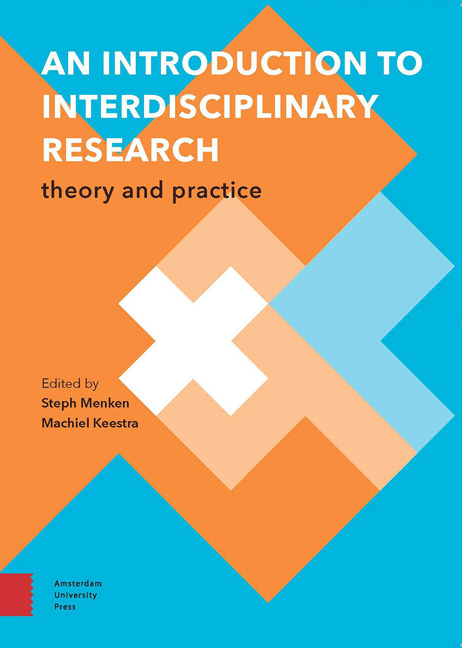Book contents
- Frontmatter
- Contents
- Acknowledgements
- Preface
- Part 1 The Handbook - ‘The What’
- 1 Introduction
- 2 What is Science? A Brief Philosophy of Science
- 3 The Disciplines
- 4 Interdisciplinarity
- 5 Complexity: The Main Driving Force Behind Interdisciplinarity
- 6 Interdisciplinary Integration
- Part 2 The Manual - ‘The How’
- 7 The Interdisciplinary Research Process
- 8 The Problem
- 9 Theoretical Framework and Research Question
- 10 How to Collect and Analyze your Data
- 11 Discussion and Conclusion(s)
- Part 3 Interdisciplinary Research in Practice
- 12 Interdisciplinary Research Example: Fogponics
- 13 Interdisciplinary Careers
- Further Reading
- References
- Colophon
6 - Interdisciplinary Integration
- Frontmatter
- Contents
- Acknowledgements
- Preface
- Part 1 The Handbook - ‘The What’
- 1 Introduction
- 2 What is Science? A Brief Philosophy of Science
- 3 The Disciplines
- 4 Interdisciplinarity
- 5 Complexity: The Main Driving Force Behind Interdisciplinarity
- 6 Interdisciplinary Integration
- Part 2 The Manual - ‘The How’
- 7 The Interdisciplinary Research Process
- 8 The Problem
- 9 Theoretical Framework and Research Question
- 10 How to Collect and Analyze your Data
- 11 Discussion and Conclusion(s)
- Part 3 Interdisciplinary Research in Practice
- 12 Interdisciplinary Research Example: Fogponics
- 13 Interdisciplinary Careers
- Further Reading
- References
- Colophon
Summary
When we distinguished between multidisciplinarity and interdisciplinarity in chapter 4, we pointed out that the synthesis or integration of disciplinary insights is the defining characteristic of interdisciplinarity. Subsequently, we gave an overview of possible drivers of interdisciplinary research in chapter 5. Once groups of scientists from different disciplines or fields bring their respective disciplinary expertise to the table, the question arises how to integrate these with each other. This is not an easy task, as different disciplinary academics tend to think and do research in different ways as a consequence of their different disciplinary educations.
So let us now zoom in on interdisciplinary integration itself. What exactly does integration mean? And how can insights from different academic disciplines be integrated, especially when they appear to be incommensurate or in conflict with each other? In this chapter, we will introduce the process of interdisciplinary integration, and how and when it is done. Moreover, we will provide a set of different approaches to integration. In box 3 we give an example (ADHD in school-aged children) that illustrates the added value of an integrated interdisciplinary approach.
Box 3
ADHD in school-aged children
Attention deficit hyperactive disorder (ADHD) is a mental disorder and, at the same time, a societal problem of significant proportions. In the US, for example, between two and four million school-aged children are affected by the disorder, showing symptoms such as hyperactivity, lack of concentration, and impulsivity. However, a thorough understanding of ADHD has not yet been arrived at. This drove Lauren Dean, a student at Miami University, to conduct an interdisciplinary study to unravel what is preventing us from understanding the causes of ADHD (Newell, 2006). To start, Dean mapped out the different assumptions and views on ADHD from the different disciplines that provide insights into the problem. She found that scientists from the fields of biology, psychology, and medicine tend to categorize ADHD as a biological disorder that needs biological intervention in the form of medication, although they realize that it cannot be diagnosed by physical tests alone, like other disorders of biological origin. Academics with a background in sociology, social history, or culture studies, in contrast, think the causes of ADHD are social and cultural, and often reject a physiological explanation of ADHD.
- Type
- Chapter
- Information
- An Introduction to Interdisciplinary ResearchTheory and Practice, pp. 41 - 49Publisher: Amsterdam University PressPrint publication year: 2016
- 1
- Cited by



